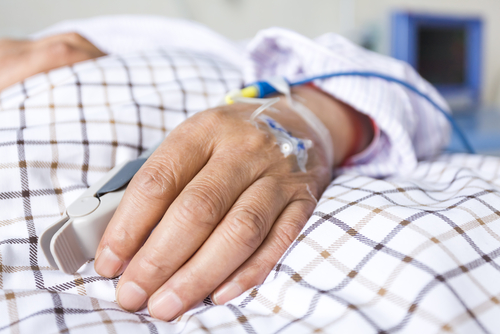Emergency ID Card for Hypoparathyroidism
Written by |

Hypoparathyroidism can lead to acute crises due to altered blood calcium levels. Physicians may not be familiar enough with the disorder to respond adequately in such a crisis.
You may, for this reason, want to consider having an emergency ID card with you at all times.
What is hypoparathyroidism?
Hypoparathyroidism is a rare condition in which your body produces abnormally low levels of parathyroid hormone (PTH). PTH is key to regulating and maintaining a balance of two minerals in your body — calcium and phosphorus.
The low production of PTH in hypoparathyroidism leads to abnormally low calcium levels in your blood and bones and an increase in phosphorus levels in your blood.
The disease can result in a host of symptoms. In addition to fatigue and generalized weakness, this may include tingling or burning sensations in the fingertips, toes, and elsewhere, and muscle pain and cramps that may be severe. Cramps that affect the throat can make breathing difficult.
How do doctors treat it?
To normalize calcium and phosphorus levels, most physicians prescribe long-term calcium and vitamin D supplements. However, these treatment strategies can induce an acute crisis of reduced or increased blood calcium levels. Such a crisis can lead to hospitalization.
It may be a challenge for emergency personnel to understand what is going on if they lack early and fast access to your medical history.
What is an emergency ID card?
Because it’s not always easy to explain what is happening or what emergency treatment you need during a hypocalcemic or hypercalcemic crisis, an emergency ID card can potentially save your life.
There are various versions of emergency ID cards. In general, they all contain personal information such as your name and birth date, emergency contacts, and the name of your primary physician. They also summarize what hypoparathyroidism is, and state that you may be having a calcium crisis.
The emergency ID card also tells healthcare professionals what actions they may need to take. Those measures could include an immediate calcium blood test, intravenous infusions of calcium gluconate or hydration, frequent monitoring of calcium levels, and contacting your endocrinologist after stabilization.
You may want to print the emergency ID card in other languages for use when traveling abroad.
Study of the usefulness of an emergency ID card
A recent study that appeared in the Journal of Internal Medicine found that an emergency ID card could facilitate the diagnosis and treatment of an acute calcium crisis.
To test the card’s usefulness, researchers distributed such a card to patients in Norway, Sweden, and Germany. To explore the opinions of those with chronic hypoparathyroidism on the need for an emergency card, the researchers also surveyed 336 patients in Norway and Sweden.
Half of the respondents reported having been hospitalized for acute low or high calcium blood levels. Of these people, about half had been admitted more than once. Collectively, 87% of patients who took part in the survey said that an emergency card would be very useful. About 95% of those hospitalized for acute hypocalcemic and 90% of those hospitalized for a hypercalcemic crisis agreed.
Last updated: July 24, 2020
***
Hypoparathyroidism News is strictly a news and information website about the disease. It does not provide medical advice, diagnosis, or treatment. This content is not intended to be a substitute for professional medical advice, diagnosis, or treatment. Always seek the advice of your physician or other qualified health provider with any questions you may have regarding a medical condition. Never disregard professional medical advice or delay in seeking it because of something you have read on this website.




